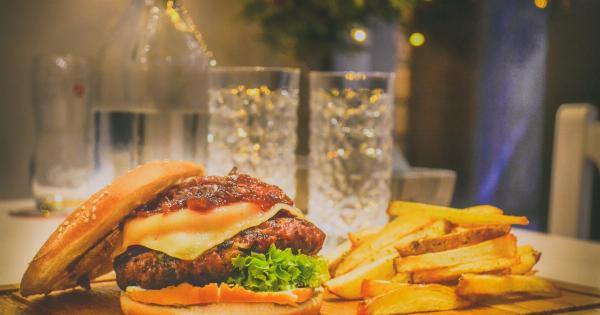When it comes to losing weight, many people often search for quick and effective methods. One such approach that has gained popularity in recent years is the concept of negative calorie foods.
Contrary to popular belief, negative calorie foods are not magical items that require more energy to digest than they provide. However, they are a great addition to any weight loss diet.
In this article, we will delve into what negative calorie foods are, how they can aid in weight loss, and provide a comprehensive list of these foods to help you achieve your weight loss goals.
What Are Negative Calorie Foods?
Negative calorie foods, also known as zero-calorie or low-calorie foods, are a type of food that supposedly burns more calories during digestion than they contain.
The idea behind negative calorie foods is that the body expends more energy breaking down and metabolizing these foods than the actual caloric content of the food itself.
While the concept of negative calorie foods may seem extraordinary, it is important to note that it is not scientifically proven. The notion that certain foods have a negative caloric impact is more of a dietary theory rather than a scientific fact.
Nevertheless, incorporating negative calorie foods into your diet can still be beneficial for weight loss. These foods tend to be low in calories, high in fiber and water content, making them effective for achieving a calorie deficit.
How Negative Calorie Foods Aid in Weight Loss
While the idea of negative calorie foods may not be entirely accurate, there are several mechanisms through which these foods can support weight loss.
1. High Fiber Content
Negative calorie foods are typically rich in dietary fiber. Fiber has numerous benefits for weight loss. Firstly, it adds bulk to your meals, making you feel fuller for longer periods. This can help prevent overeating and unnecessary snacking.
Secondly, fiber slows down the digestion process, which can help regulate blood sugar levels and prevent sudden spikes and crashes that may lead to cravings. Lastly, fiber promotes healthy digestion and keeps the digestive system functioning optimally.
2. Low-Calorie Content
As the name suggests, negative calorie foods are extremely low in calories. This means that you can consume a larger volume of these foods without significantly impacting your daily caloric intake.
Since weight loss is primarily achieved by creating a caloric deficit, incorporating negative calorie foods into your meals can be an effective strategy.
3. High Water Content
Many negative calorie foods have a high water content. Fruits and vegetables, such as watermelon, cucumber, and grapefruit, are excellent examples. These foods are not only low in calories but also hydrating.
The high water content helps keep you hydrated, aids in digestion, and contributes to a feeling of fullness.
4. Thermic Effect of Food
While negative calorie foods may not completely offset their caloric content, they still have a higher thermic effect of food compared to other foods.
The thermic effect of food refers to the number of calories burned during the process of digestion, absorption, and storage of nutrients. Foods higher in protein and fiber tend to have a higher thermic effect, as they require more energy to break down.
5. Nutrient Density
Negative calorie foods are often packed with essential vitamins, minerals, and antioxidants. When you are trying to lose weight, it is essential to provide your body with adequate nutrition while keeping calorie intake in check.
Incorporating nutrient-dense negative calorie foods into your diet can help you meet your nutritional needs without adding excessive calories.
List of Negative Calorie Foods
Now that we understand how negative calorie foods can aid in weight loss, let’s take a look at a list of some commonly available negative calorie foods:.
1. Celery
Celery is a popular negative calorie food that is extremely low in calories and high in fiber. It is also rich in vitamins A, C, and K.
2. Cucumbers
Cucumbers have a high water content, making them hydrating and filling. They are low in calories and can be enjoyed as a snack or added to salads.
3. Watermelon
Watermelon is not only delicious but also a fantastic negative calorie food. It is packed with water and essential vitamins, making it a refreshing and healthy choice.
4. Grapefruit
Grapefruit is known for its metabolism-boosting properties. It is rich in antioxidants, fiber, and vitamin C.
5. Berries
Strawberries, blueberries, raspberries, and blackberries are all low-calorie fruits that are high in fiber and antioxidants.
6. Leafy Greens
Leafy greens such as spinach, kale, and lettuce are excellent choices for weight loss. They are low in calories, high in fiber, and packed with essential nutrients.
7. Broccoli
Broccoli is a cruciferous vegetable that is both nutritious and low in calories. It is high in fiber, vitamins, and minerals, making it a perfect addition to a weight loss diet.
8. Carrots
Carrots are not only good for your eyes but also for weight loss. They are crunchy, low in calories, and loaded with fiber and vitamin A.
9. Tomatoes
Tomatoes are versatile negative calorie foods that can be used in various dishes. They are packed with antioxidants, vitamins, and minerals while being low in calories.
10. Apples
An apple a day keeps the doctor away, and it can also aid in weight loss. Apples are high in fiber, low in calories, and make for a satisfying and portable snack.
Conclusion
While negative calorie foods may not be as miraculous as some claim them to be, they can certainly contribute to weight loss when incorporated into a balanced diet.
The high fiber, low-calorie, and nutrient-dense nature of these foods make them an excellent addition to any weight loss plan. Remember, sustainable weight loss is achieved through a combination of healthy eating, regular physical activity, and overall lifestyle changes.
So, make sure to include a variety of negative calorie foods in your diet while focusing on creating a sustainable and enjoyable wellness journey.



























